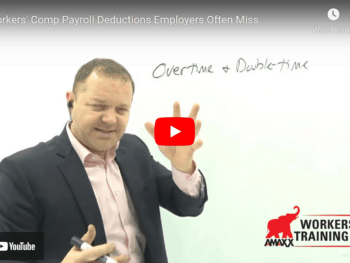
Due to the high cost of premiums, pool members were withdrawing from the pool and joining the other pool in the state. The decline in membership in the pool was jeopardizing the existence of the pool. In desperation, the Executive Director sent out a Request for Proposal to various claim file auditors. The claim auditor from two years ago responded with a proposal with the lowest price, significantly lower than the other audit proposals. The Executive Director did something he had never done before; he excluded the low bid proposal.
Total Lack of Compliance with Guidelines
After interviewing several of the claim file auditors, the Executive Director selected an auditor who demonstrated a keen understanding of the cost of workers’ compensation. The claims auditor compared the claim handling guidelines of the third-party administrator (TPA) with the claim files. The auditor was dismayed by the total lack of compliance by the TPA with their own claim handling guidelines.
During the course of the claim file audit, the auditor interviewed the Executive Director, the claims manager at the TPA and several of the workers’ comp adjusters. The reasons the governmental pool had higher than average cost for workers’ compensation became clear to the auditor. The high cost of claims related directly to decisions the Executive Director had made.
Provider Was Chosen Solely on Price
Three years earlier, when the pool was looking to replace the prior TPA, the Executive Director had selected the current TPA because their claims handling proposal had been nearly $250,000 per year lower than the average bid from other TPAs bidding for the business. (The prior TPA had also been chosen based solely on having the lowest price). The claim auditor from two years earlier who had been chosen solely on the price quoted had not done an in-depth review of the files and had overlooked various mistakes in the claim file handling.
The TPA, who had bid the job at a flat price for the program, had each workers comp adjuster handling from 175 to 225 files at any one time, a workload the adjusters could not properly handle. If the TPA hired additional adjusters to handle the claims, the TPA would lose money on the program. The low price proposal the Executive Director had accepted did not have any provisions in regards to the number of claims each adjuster would be assigned. (The executed claims handling contract was also silent in regards to the overall claims handling service standards).
Most WC Claims Were Out of Control
The workers’ comp adjusters had low morale due to their overworked situation. The adjusters did not have time to properly investigate the claims, the adjusters were too busy to assist the pool members on early return to work for the employees, and the adjusters were not working with nurse case managers to control the medical treatment. Most of the workers’ comp claims were out of control.
The end result of the Executive Director’s short term thinking of price only in selecting the TPA was much higher payments on the workers’ comp claims and a loss of pool members due to the overpayment of claims (resulting in increased pool premiums). The Executive Director saved nearly $250,000 per year by selecting the lowest cost TPA over the average bid of other TPAs. An actuarial study using National Council on Compensation Insurance data estimated that the workers’ comp claims payments for claims occurring during the year 2007 were nearly $1.7 million higher than the average for other workers in the same NCCI job classification codes. The cost for short term thinking of price only in selecting the TPA? Nearly $1.5 million a year.
The second claims auditor included in his proposal not only a review of the claim files but also a review of the claims management process. As a result of the claims audit, the following recommendations were made to the Executive Director:
- The Executive Director should meet with the current TPA, advise the workload of the adjusters was unacceptable and renegotiate the remaining year of the three-year contract to provide for proper staffing by the TPA at a profitable level
- The Executive Director should put out for bid the claims handling before the current contract is up by utilizing “21 Questions to Ask in Your RFP for a TPA.”
- The next TPA should have experience handling governmental pools and be willing to provide contact information for all their governmental pools.
- When the final 3, 4 or 5 TPA candidates are chosen for the next claims handling contract, comparisons should be made of:
- the average value of closed indemnity claims;
- the average number of days open for the closed indemnity claims;
- the percentage of claims that went into litigation;
- the average settlement cost of litigated claims;
- the amount spent on expenses and the ratio of expense cost to claim cost.
- The nurse case management should be selected as carefully as the TPA whether provided by the TPA or handled as a separate contract.
Short-Term Price Savings, Much Higher Total Cost In Long Run
The Executive Director selected the easy way of making a choice of a TPA using only the price for the TPA services. This resulted in an immediate, short term price savings, but a much higher total cost in the long run. When selecting any service provider, an in-depth investigation into the services that will be provided should be made prior to making a decision. A balance between price and quality of service should be reached prior to the start of the service contract.
When you speak with Senior Management, try to sell them on selecting the “best” service, with the most cost-effective outcome, refer to it as “value.” The Total Loss Costs will ultimately be lower if you choose the service that provides the best “value.”

Contact: RShafer@ReduceYourWorkersComp.com.
Workers’ Comp Roundup Blog: https://blog.reduceyourworkerscomp.com/
©2019 Amaxx LLC. All rights reserved under International Copyright Law.
Do not use this information without independent verification. All state laws vary. You should consult with your insurance broker, attorney, or qualified professional.














